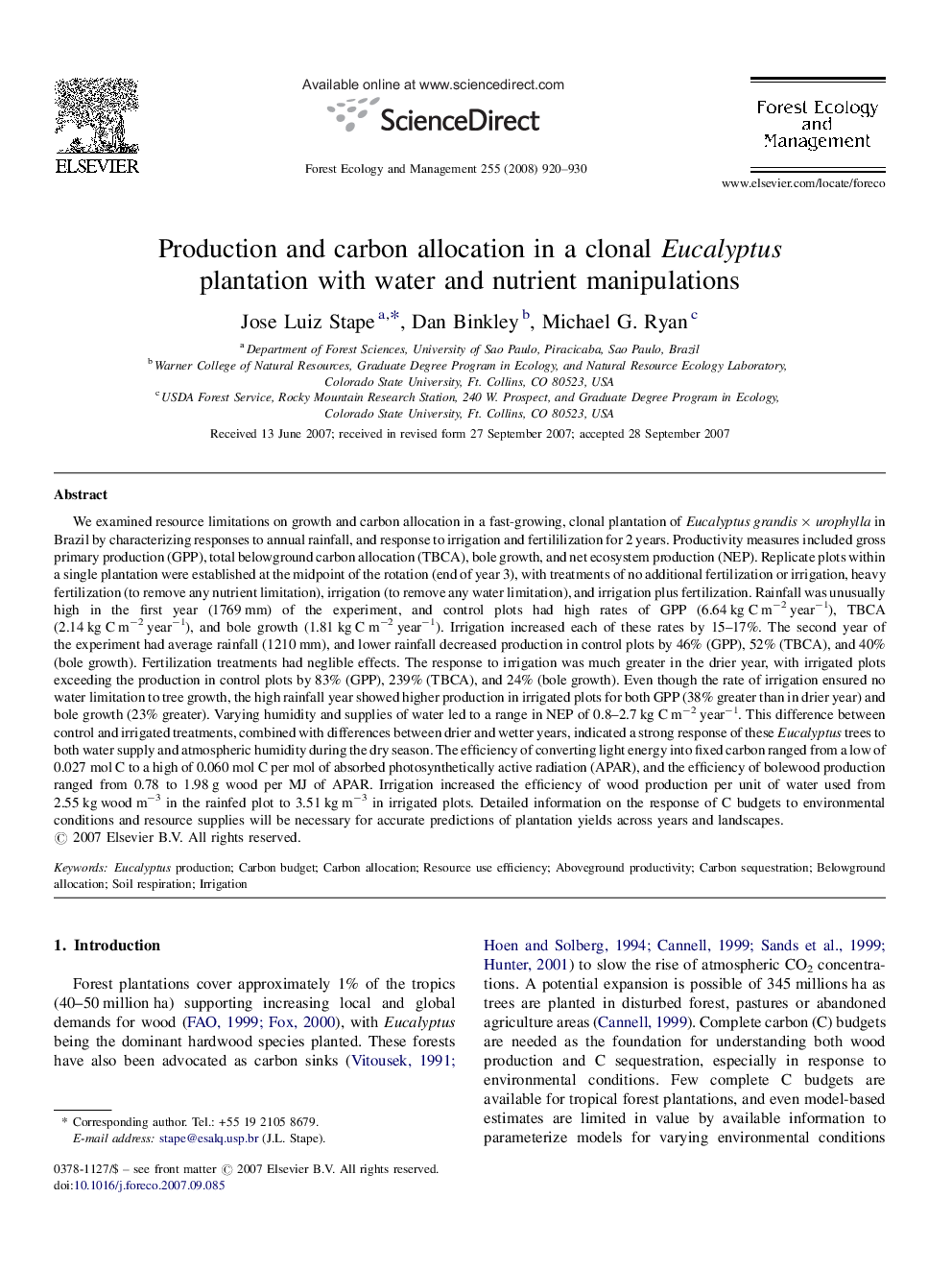| Article ID | Journal | Published Year | Pages | File Type |
|---|---|---|---|---|
| 89869 | Forest Ecology and Management | 2008 | 11 Pages |
We examined resource limitations on growth and carbon allocation in a fast-growing, clonal plantation of Eucalyptus grandis × urophylla in Brazil by characterizing responses to annual rainfall, and response to irrigation and fertililization for 2 years. Productivity measures included gross primary production (GPP), total belowground carbon allocation (TBCA), bole growth, and net ecosystem production (NEP). Replicate plots within a single plantation were established at the midpoint of the rotation (end of year 3), with treatments of no additional fertilization or irrigation, heavy fertilization (to remove any nutrient limitation), irrigation (to remove any water limitation), and irrigation plus fertilization. Rainfall was unusually high in the first year (1769 mm) of the experiment, and control plots had high rates of GPP (6.64 kg C m−2 year−1), TBCA (2.14 kg C m−2 year−1), and bole growth (1.81 kg C m−2 year−1). Irrigation increased each of these rates by 15–17%. The second year of the experiment had average rainfall (1210 mm), and lower rainfall decreased production in control plots by 46% (GPP), 52% (TBCA), and 40% (bole growth). Fertilization treatments had neglible effects. The response to irrigation was much greater in the drier year, with irrigated plots exceeding the production in control plots by 83% (GPP), 239% (TBCA), and 24% (bole growth). Even though the rate of irrigation ensured no water limitation to tree growth, the high rainfall year showed higher production in irrigated plots for both GPP (38% greater than in drier year) and bole growth (23% greater). Varying humidity and supplies of water led to a range in NEP of 0.8–2.7 kg C m−2 year−1. This difference between control and irrigated treatments, combined with differences between drier and wetter years, indicated a strong response of these Eucalyptus trees to both water supply and atmospheric humidity during the dry season. The efficiency of converting light energy into fixed carbon ranged from a low of 0.027 mol C to a high of 0.060 mol C per mol of absorbed photosynthetically active radiation (APAR), and the efficiency of bolewood production ranged from 0.78 to 1.98 g wood per MJ of APAR. Irrigation increased the efficiency of wood production per unit of water used from 2.55 kg wood m−3 in the rainfed plot to 3.51 kg m−3 in irrigated plots. Detailed information on the response of C budgets to environmental conditions and resource supplies will be necessary for accurate predictions of plantation yields across years and landscapes.
